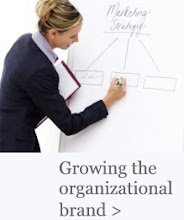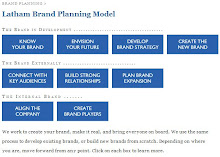He has been involved with Coach for almost 30 years, sharing responsibility for sister Sara Lee brands during his long career, and enjoying a track record that's not only rare in corporate America but remarkable even among his luxury and fashion brand peers.
When Sara Lee released the Coach business in 2000, he took the brand public and has presided over seven years of extraordinary growth -- and use of the word extraordinary is not an overstatement.
 This enviable, profitable growth has come from expansive licensing programs which dramatically expanded Coach beyond handbags (which today account for 64 percent of sales) into fashion accessories, scarves, watches, and even fragrance. These were followed with aggressive store expansion, mostly in malls, and equally aggressive global expansion, notably in Japan, where the brand is a highly successful 'import', ranking number two in total handbag and accessories sales.
This enviable, profitable growth has come from expansive licensing programs which dramatically expanded Coach beyond handbags (which today account for 64 percent of sales) into fashion accessories, scarves, watches, and even fragrance. These were followed with aggressive store expansion, mostly in malls, and equally aggressive global expansion, notably in Japan, where the brand is a highly successful 'import', ranking number two in total handbag and accessories sales.In addition, Coach now has 30 stores in China with plans for 50 more. If you include Hong Kong and Macau, Coach is addressing a total handbag and accessories market of around $1.2 billion that will grow as dramatically as China's middle class expand their buying power.
Quoted this week in The Wall Street Journal, Mr. Frankfort says that Japan-like growth in China would double the Coach business in four or five years.
Very few marketers -- in any category -- are contemplating growth like that.
Of course, business writers and fashion writers look at Coach through different lenses. Curiously, both share the same questions about Coach design and merchandising strategies.
In a nutshell, they wonder how Coach can expand a classic brand to attract young female shoppers, even middle-class teenage shoppers, in new stores in Staten Island and Queens -- and yet still retain elite, traditional and somewhat conservative patrons on Madison Avenue.
It's a question that challenges (and tempts) most fashion and luxury brand marketers:
Does the success you achieve with one audience threaten your franchise with others?
Can your brand withstand seemingly contradictory design and targeting strategies?
As you increase accessibility for the masses, will your upper-class mystique and reputation actually take a nose dive?
Mr. Frankfort and his design team, lead by President and Executive Creative Director Reed Krakoff, clearly have made their decisions.
It's full speed ahead -- with both.
Like the legendary Ralph Lauren, Messrs. Frankfort and Krakoff are (1) creatively driven, (2) customer and audience driven, and (3) market driven. They share a similar feeling-in-the-fingertips about what they will create -- for whom -- and where, exactly, it will be sold.
Ralph Lauren has always known -- and Coach has proved to the world -- that they can develop stunning, innovative and highly desirable items for diverse and different consumers (segmented by age, style, taste, class -- choose your descriptor), all of whom they understand intimately. Both brands have also demonstrated an ability to intelligently and insightfully manage distribution, along product lines, virtually on a store by store, mall by mall, and chain by chain basis.
As Mr. Frankfort says, Madison Avenue shoppers don't know what's on the shelves in the store in Queens -- and the reverse is probably also true. Yet, for each audience, he is sure that the Coach products on the shelves in their Coach store will be perfectly positioned for them.
If you think there's a fault line in that logic, certainly there is some risk. As Mr. Frankfort admits, consumers today shop 'high' (on Madison) and 'low' (at Target). And some malls -- in Atlanta, for example -- bring together very diverse shoppers under one roof. Undoubtedly, some overlap of styles and customers is inevitable. As a result, there is some risk to brand perception.
If you are a classic Coach buyer -- stylish, but restrained in your taste -- and your nearest Coach store suddenly is filled with extravagant logo-dominant merchandise with chains, padlocks and buckles, well, that can be jarring. Suddenly, Coach isn't your store. And that's a risk to be managed. However, if the selection is not right for you, maybe it's perfect for your granddaughter.
Yet the challenge for Coach is never to lose you.
That's the distinction that English luxury marketer Burberry achieved in their highly successful brand expansion in the late 1990s. Virtually overnight, Burberry become very youthful, very extravagant, and very new -- yet still retained their traditional, upper-crust customers. Burberry today is the classic case of luxury brand expansion.
Fortunately, if you are a classic Coach shopper (stylish and restrained in your taste), you should know that very stylish, very restrained Coach designs are still available, still beautifully made, and there are more of them in Coach today than there have ever been.
Perhaps Coach needs to make you aware of that.
The fact is, if you are wondering about the Frankfort-Krakoff strategy and what impact it may have on brand perception, you haven't looked at Coach lately.
The Coach handbag selection alone is dazzling -- there isn't a style, or the shadow of a style, or a design or tonal note that Coach hasn't explored and found a way to attach two perfect handles and offer it in the sizes, colors and textures you prefer -- either logo'd to death, logo-free, patchwork or plain, classic and traditional, or -- for the younger shopper who is your granddaughter -- totally off the charts with color, metal, and pizzaz.
To be specific, Coach now offers 14 handbag lines, all beautifully conceived, a total of over 231 individual handbags.
Again, maybe Coach needs to make you aware of that.
Ultimately, successful brand management is a balancing act. Intuition is as important as insight. And as observers have noted, Coach is on the line.
But Coach has leaders like Lew Frankfort and Reed Krakoff.
They are creatively inspired, they understand and respect the DNA of their brand, and they know their customers.
Marketers like this always seem to find a way to make things happen.
Kudos to Coach.


